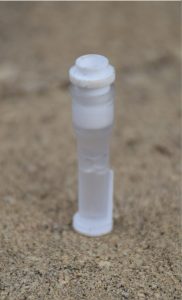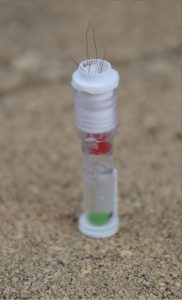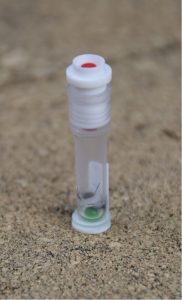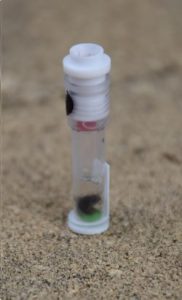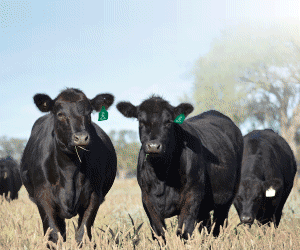TSU: Collection & Storage Guidelines
Collection:
To collect a TSU sample for DNA testing;
- Arrange TSU collectors and the applicator gun, available through your local Allflex supplier and the DNA Test Request form available from Angus Australia.
- Write on the form or box the registered animal ID next to the corresponding TSU barcode ID.
- Load a TSU into the applicator gun
- With the animal safely restrained, identify the ear to be sampled, ensure it is free from debris. Select a location on the ear which avoids veins and any existing identification, such as tattoos. A distal location on the ear is preferred.
- Rapidly depress the trigger of the applicator, when positioned correctly on the ear of the animal. Release the trigger once the trigger has been pulled fully closed.
- Release the black retention ring to remove the TSU
- Examine the TSU to ensure the following;
- The cap of the tissue is sealed tightly, with no hair obscuring the seal
- Liquid is present within the TSU, with the float ball present
- The sample can be seen in the liquid
- Store in a zip lock bag or TSU rack in a cool, dry place before sending to Angus Australia with the DNA test request form.
Storage on farm:
- Store either in a cool, dry, dark place or in the fridge
- Ensure the location has a stable temperature throughout the storage period
- Do not freeze
- Recommended storage up to 12 months only
Postage Recommendations:
- Ideally TSU samples should be placed in a TSU rack for postage. Angus Australia can supply racks to members which hold 96 samples.
- If only posting a small number of TSUs, it is advised that all the samples should be placed in a zip lock bag or the cardboard box that the TSUs were supplied in.
- Depending on the number of samples, it is best to post TSU samples in a tough bag or box.
Examples of unsuitable TSU samples:
TSUs are designed for single use and it is important that the correct procedure is followed to ensure a suitable sample is taken. Importantly the TSU should be checked for a suitable sample and seal prior to being submitted.
The following are real examples of some of the samples which have failed the quality control or DNA extraction process due to issues with the TSU sample.
